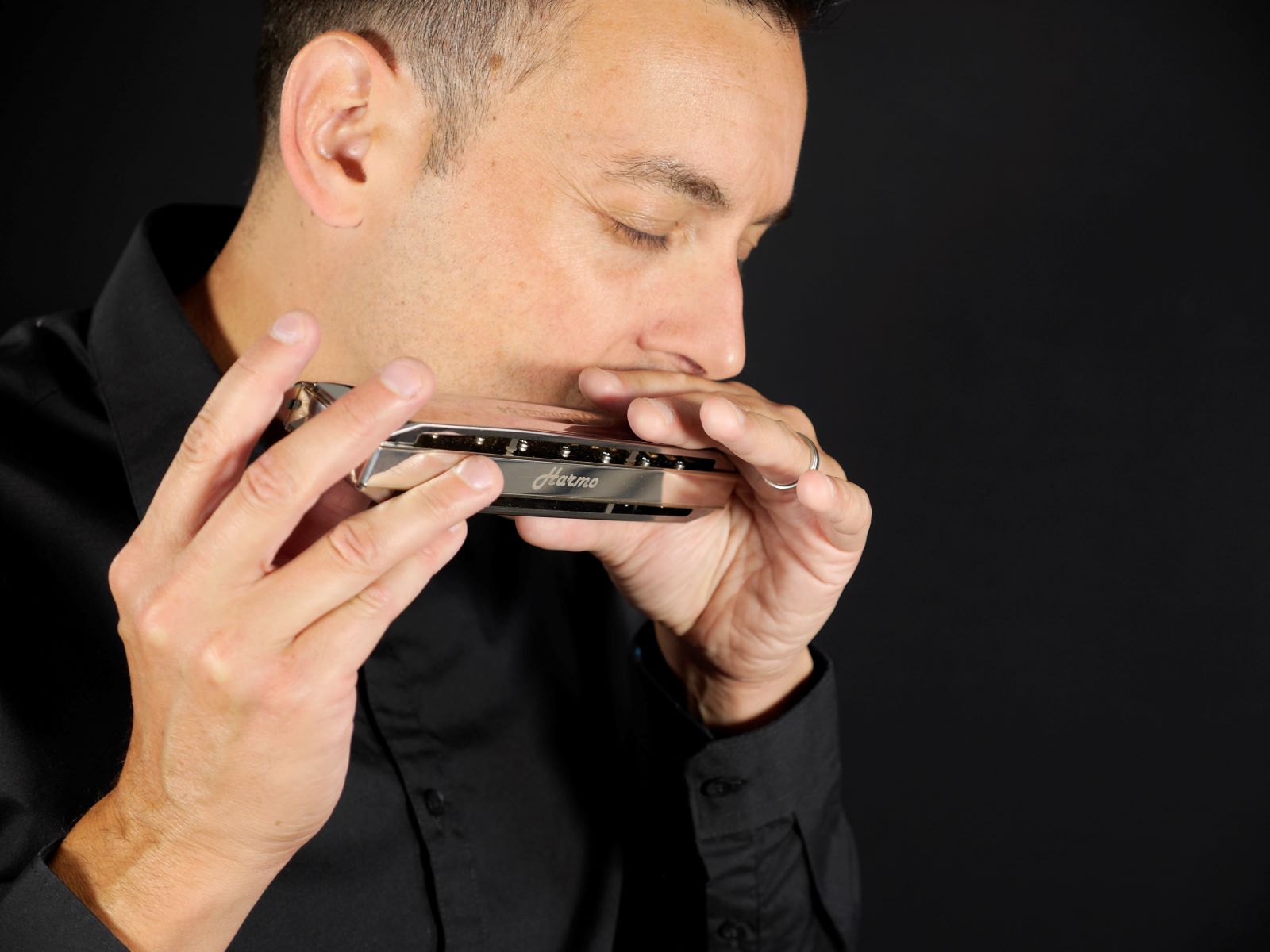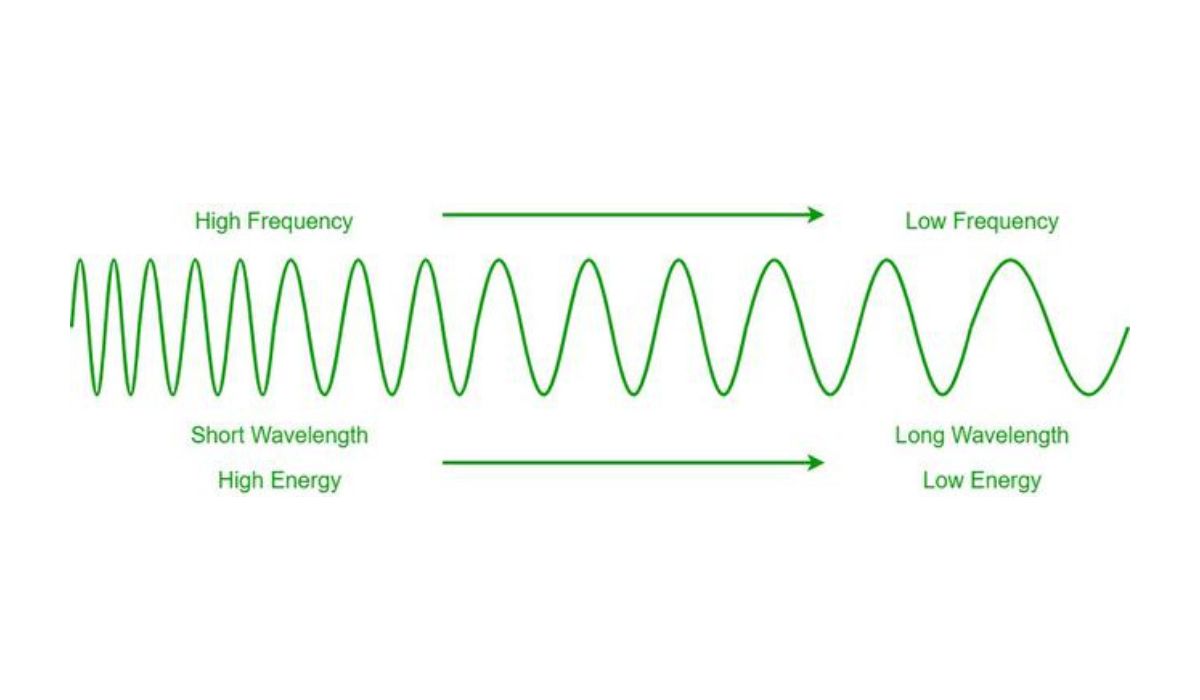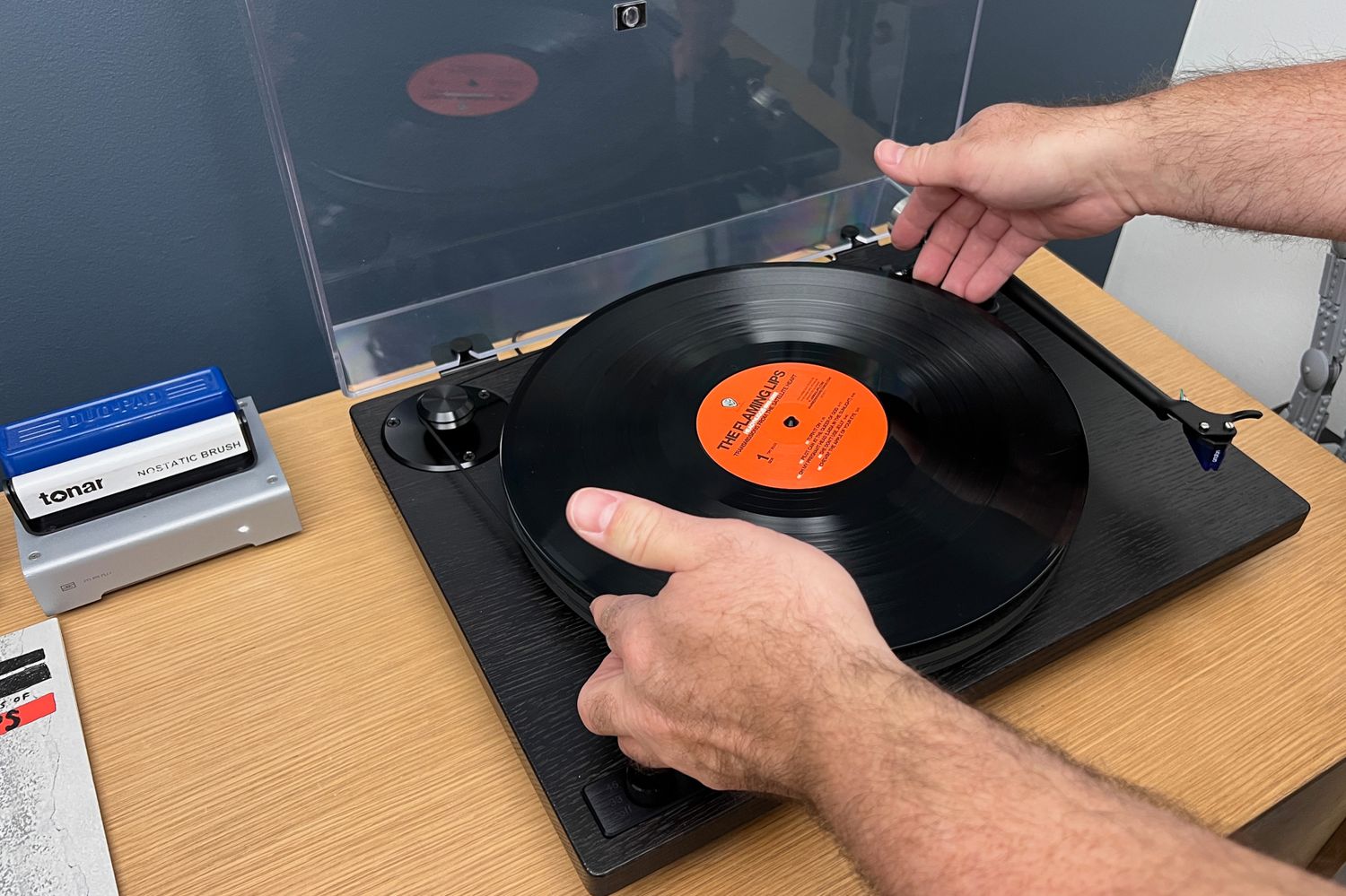Home>Devices & Equipment>Radio>How To Block Radio Waves


Radio
How To Block Radio Waves
Modified: January 22, 2024
Learn how to block radio waves effectively and protect your privacy. Discover the best methods to shield yourself from unwanted radio frequency interference.
(Many of the links in this article redirect to a specific reviewed product. Your purchase of these products through affiliate links helps to generate commission for AudioLover.com, at no extra cost. Learn more)
Table of Contents
Introduction
Radio waves play a fundamental role in our modern world. They allow us to transmit and receive information wirelessly, enabling communication systems like radios, televisions, and cell phones. Despite their usefulness, there are situations where blocking radio waves becomes necessary.
Understanding the nature of radio waves is essential to comprehend why blocking them may be necessary. Radio waves are a form of electromagnetic radiation with long wavelengths and low frequencies. They are produced by various sources, including radio and television stations, cell phone towers, and Wi-Fi signals. These waves travel through the air and can pass through solid objects, making them difficult to control.
Potential health effects associated with prolonged exposure to radio waves have spurred the need to block them in certain situations. While the scientific community is divided on the long-term effects, some studies suggest a possible link between radio wave exposure and health issues such as cellular damage, insomnia, and even cancer. While the level of exposure in everyday environments is generally considered safe, blocking radio waves can provide peace of mind for those concerned about their potential impact.
The importance of blocking radio waves extends beyond personal health concerns. In sensitive environments like research facilities, military installations, or corporate offices, controlling electromagnetic interference is crucial. Unwanted radio wave transmissions can interfere with sensitive equipment or compromise confidential information, making it necessary to implement measures to block radio waves effectively.
In this article, we will explore various methods to block radio waves. From using shielding materials to creating Faraday cages, we will cover different approaches that can help mitigate radio wave interference. Whether you are trying to protect sensitive equipment or create a radio-free zone within your home, understanding these methods will empower you to effectively block radio waves.
Understanding Radio Waves
To effectively block radio waves, it is crucial to have a basic understanding of how they work and propagate. Radio waves are a type of electromagnetic radiation, which means they consist of electric and magnetic fields oscillating perpendicular to each other. They have different frequencies and wavelengths, allowing them to carry different types of information.
The frequency of a radio wave refers to the number of oscillations it makes per second and is measured in Hertz (Hz). The higher the frequency, the more oscillations per second, and the shorter the wavelength. A wide range of frequencies is used for various applications, including AM and FM radio, television broadcasting, cellular communication, and Wi-Fi signals.
Radio waves are generated by antenna systems that vary in size, design, and configuration depending on the frequency and the application. When an electrical current flows through an antenna, it oscillates and emits radio waves into space. These waves travel through the air, often referred to as a medium, until they are received by another antenna or blocked by an obstacle.
An important characteristic of radio waves is their ability to penetrate different materials. Some materials, such as glass and plastics, allow radio waves to pass through with minimal attenuation. Others, like metal or dense building materials, can reflect or absorb radio waves, significantly reducing their transmission. Understanding the properties of different materials can help in effectively blocking radio waves.
It is also important to note that radio waves can interfere with each other. Multiple signals occupying the same frequency range can cause interference, resulting in poor reception or distorted communication. This interference can be mitigated through careful frequency allocation and signal shielding.
By comprehending the properties and behavior of radio waves, we can better understand how to block them effectively. Whether it is for health concerns, interference mitigation, or confidential communication, this understanding forms the foundation for implementing the appropriate methods to block radio waves.
Potential Health Effects of Radio Waves
The potential health effects of radio waves have been a topic of debate and research for many years. While radio waves are generally considered safe for everyday use, some studies suggest that long-term exposure to high levels of radio waves may have adverse effects on human health.
One of the concerns surrounding radio waves is their ability to heat body tissue. High-power radio frequency waves, such as those used in industrial applications or medical treatments, can generate heat and cause tissue damage if not used properly. It is essential to follow safety guidelines and regulations to prevent such incidents.
Another area of concern is the potential for cellular damage due to long-term exposure to radio waves. Some studies have suggested a possible link between radio wave exposure and genetic mutations, changes in cell membrane permeability, or alterations in cellular processes. However, the findings are inconclusive and have not been consistently replicated, leading to ongoing scientific debate.
Insomnia is another health concern associated with exposure to radio waves. Some individuals report difficulty sleeping or disturbances in sleep patterns when exposed to high levels of electromagnetic fields, including radio waves. The exact mechanism behind this correlation is not well understood, but it is an area of interest for researchers studying the effects of radio waves on human health.
There have also been claims suggesting a potential link between long-term radio wave exposure and certain types of cancer. However, the evidence is limited, and scientific consensus has not been reached on this matter. Regulatory agencies, such as the World Health Organization, review and evaluate the available research to establish guidelines and safety limits for radio wave exposure to protect public health.
It is important to note that the levels of radio wave exposure encountered in everyday environments, such as homes, offices, and public spaces, are generally considered safe. Regulatory standards and guidelines set limits on exposure levels to ensure public safety. However, for individuals who may be more sensitive or have specific health concerns, taking measures to block or reduce radio wave exposure can provide peace of mind.
While the potential health effects of radio waves remain an area of ongoing research and discussion, it is essential to stay informed about the latest findings and follow the recommended safety guidelines. By understanding the potential risks and taking appropriate precautions, individuals can make informed decisions and take steps to minimize radio wave exposure as necessary.
Importance of Blocking Radio Waves
Blocking radio waves is crucial in several scenarios where the control of electromagnetic interference is necessary. The importance of blocking radio waves extends beyond concerns about potential health effects and includes protection of sensitive equipment, secure communication, and maintaining privacy.
In research facilities, sensitive experiments and measurements can be affected by unwanted radio wave interference. By implementing measures to block radio waves, researchers can ensure that their equipment operates without any external interference, leading to more accurate and reliable results.
Military installations also require effective radio wave blocking to prevent the interception of important signals. By employing sophisticated shielding techniques and creating controlled environments, military operations can be conducted with enhanced security and communication privacy.
In corporate offices and establishments, protecting confidential information from eavesdropping or data breaches is paramount. By blocking radio waves, it becomes much harder for unauthorized individuals to intercept wireless signals and gain access to sensitive data. This is particularly crucial in industries that handle sensitive financial data or proprietary information.
In certain residential or community settings, blocking radio waves can create a sanctuary for those who are sensitive to electromagnetic fields. Some individuals report experiencing electromagnetic hypersensitivity (EHS), where they experience symptoms such as headaches, fatigue, and dizziness when exposed to certain levels of electromagnetic radiation. By blocking radio waves, these individuals can create a space where they feel more comfortable and experience reduced symptoms.
Furthermore, there may be instances where individuals simply desire a radio-free zone. In today’s connected world, people are constantly surrounded by various wireless devices and signals. Creating an environment free from radio waves can provide a break from the constant stream of information and allow for a quieter, more peaceful setting.
Overall, the importance of blocking radio waves lies in ensuring the smooth operation of sensitive equipment, protecting confidential information, and providing a space free from potential health concerns. Whether it is in research facilities, military installations, corporate environments, or personal spaces, effective radio wave blocking techniques are vital for maintaining privacy, security, and peace of mind.
Methods to Block Radio Waves
There are several effective methods to block radio waves, ranging from simple solutions to more advanced techniques. Each method has its own advantages and applications, and the choice depends on the specific requirements and circumstances. Here are some commonly used methods to block radio waves:
- Shielding Materials: Using materials that can absorb or reflect radio waves is one of the simplest and most effective ways to block them. This can include materials like metal foils, copper mesh, or conductive fabrics. These materials act as barriers and can be used to line walls, floors, or ceilings to block radio wave transmission.
- Creating Faraday Cages: Faraday cages are enclosures made of conductive materials that provide complete electromagnetic shielding. They work by distributing the incoming radio waves around the exterior surface, preventing them from entering the enclosed space. Faraday cages are commonly used in laboratories, radio frequency testing facilities, and sensitive environments where high levels of radio wave blocking are required.
- Using Radio Wave Blocking Paints: Radio wave blocking paints are special coatings formulated with conductive materials that can absorb and dissipate radio waves. These paints are applied to walls, ceilings, or other surfaces, effectively reducing the amount of radio wave transmission. They are easy to apply and provide a discreet solution for blocking radio waves.
- Installing Window Films or Screens: Windows can be a significant source of radio wave penetration. Installing window films or screens that are designed to block radio waves can help reduce the amount of radio wave transmission. These films or screens contain conductive materials that absorb or reflect radio waves, providing an additional layer of protection.
- Using RF Blocking Fabrics: RF (radio frequency) blocking fabrics are woven materials that contain conductive fibers, such as silver or copper. These fabrics can be used to create curtains, screens, blankets, or clothing items that effectively shield against radio wave transmission. They are flexible and provide a portable solution for blocking radio waves in specific areas.
When implementing these methods, it is important to consider the specific requirements and desired level of radio wave blocking. Factors such as the frequency range being targeted, the size of the area to be blocked, and the durability of the blocking solution should be taken into account.
It is also worth noting that while these methods can effectively block radio waves, complete isolation from all radio wave signals may not be achievable. With the increasing ubiquity of wireless devices and networks, some level of radio wave transmission may always be present. However, these methods can significantly reduce the amount of radio wave penetration and provide a controlled environment with minimized interference.
By employing these methods to block radio waves, individuals and organizations can protect sensitive equipment, maintain privacy, and reduce potential health concerns associated with excessive radio wave exposure.
Shielding Materials
Shielding materials are commonly used to block radio waves and can be an effective solution in various situations. These materials are designed to absorb or reflect electromagnetic radiation, including radio waves, reducing their transmission through walls, floors, or other surfaces. Here are some common types of shielding materials used to block radio waves:
- Metal Foils: Metal foils, such as aluminum or copper, are commonly used for their high conductivity and ability to reflect radio waves. They can be installed by applying them to surfaces or by using adhesive-backed sheets. Metal foils are often used in combination with other shielding methods to create a multilayered approach for maximum effectiveness.
- Copper Mesh: Copper mesh is a flexible and conductive material that can be used to create barriers against radio waves. It can be installed by attaching it to walls, ceilings, or floors, effectively blocking the transmission of radio waves. Copper mesh is commonly used in electronic enclosures, research facilities, and areas where strong radio wave blocking is required.
- Conductive Fabrics: Fabrics woven with conductive fibers, such as silver or copper, can provide an effective solution for blocking radio waves. Conductive fabrics can be used to line walls, create curtains, or make clothing items that offer protection against radio wave penetration. They provide a versatile and portable option for blocking radio waves in specific areas.
- Metalized Films: Metalized films are thin, flexible sheets that can be applied to windows, glass surfaces, or other areas to block radio waves. These films contain a layer of metal, such as aluminum, which reflects radio waves. Metalized films are commonly used in buildings, laboratories, or sensitive environments to enhance privacy and reduce electromagnetic interference.
- Conductive Paints: Conductive paints infused with metal particles or carbon-based materials can be applied to walls, ceilings, or other surfaces to block radio waves. These paints provide a discreet and easy-to-apply solution for reducing radio wave transmission. They are often used in residential, commercial, and industrial settings to create radio wave-free zones.
When using shielding materials, it is important to ensure proper installation to maximize their effectiveness. This includes achieving good electrical contact between different layers of materials, minimizing gaps or seams, and avoiding any areas that could compromise the integrity of the shielding. Additionally, the choice of shielding material should consider the specific frequency range being targeted to provide optimal blocking performance.
While shielding materials can effectively block radio waves, it is essential to assess the specific requirements and limitations of the environment. Factors such as the size of the area, the level of radio wave blocking needed, and the practicality of installation should be considered when selecting the appropriate shielding materials.
By utilizing shielding materials, individuals and organizations can create controlled environments, protect sensitive equipment, and maintain privacy by blocking radio wave transmission.
Creating Faraday Cages
Creating Faraday cages is a highly effective method to block radio waves. Faraday cages are enclosures made of conductive materials that provide complete electromagnetic shielding, including radio waves. By creating a Faraday cage, the exterior surface of the enclosure distributes incoming radio waves around the structure, preventing them from entering the enclosed space. Here’s how you can create a Faraday cage:
- Select a suitable enclosure: Choose a space that you wish to convert into a Faraday cage. This could be a room, a section of a room, or even a small box or container depending on your needs.
- Choose conductive materials: Select suitable conductive materials to build the structure of the Faraday cage. Common options include copper sheets, aluminum foil, or conductive mesh. These materials should be able to block and reflect radio waves effectively.
- Construct the enclosure: Use the selected conductive materials to create the walls, floor, and ceiling of the enclosure. Ensure that the conductive elements are securely connected to each other to maintain good electrical contact throughout the structure. Cover any gaps or seams to prevent radio wave leakage.
- Create an entryway: It is important to provide an entryway to the Faraday cage that maintains the continuity of the shielding. Ensure that the entrance has conductive properties, such as a conductive door made of the same material as the rest of the enclosure. Use conductive gaskets or sealants to eliminate any gaps around the entrance that could compromise the shielding effect.
- Test the Faraday cage: Before relying on the Faraday cage, it is crucial to perform tests to ensure its effectiveness. Use radio frequency meters or signal detectors inside the enclosure and observe if they receive any outside signals. If the readings are significantly reduced compared to the surrounding area, it indicates the successful blocking of radio waves.
Faraday cages find application in various industries, including research laboratories, military facilities, and even in everyday settings like homes or offices. They are especially useful in blocking radio waves in environments that require high levels of electromagnetic shielding. This could include areas where sensitive equipment is used, confidential information is processed, or secure communication is needed.
It’s important to note that the effectiveness of a Faraday cage depends on the quality of the construction and the selected materials. Ensure that the conductive materials used have good electrical conductivity and are able to block radio waves effectively. Additionally, maintaining the continuity of the shielding by eliminating any gaps or seams is crucial to ensuring optimal performance.
By creating Faraday cages, individuals and organizations can establish controlled environments that are shielded from external radio wave interference, protecting sensitive equipment, data privacy, and communication integrity.
Using Radio Wave Blocking Paints
Radio wave blocking paints offer a convenient and effective solution for reducing radio wave transmission through walls, ceilings, and other surfaces. These specialized paints are formulated with conductive materials that can absorb and dissipate radio waves, providing a barrier against their penetration. Here’s how to utilize radio wave blocking paints:
- Select the appropriate paint: Choose a radio wave blocking paint that is specifically designed for the purpose. Look for paints that contain conductive additives such as metal particles or carbon-based materials. These additives enhance the paint’s ability to block radio waves.
- Prepare the surface: Before applying the paint, ensure that the surface is clean, dry, and free from any loose debris or contaminants. Sanding the surface lightly can help create a smoother finish, maximizing the paint’s adhesion and coverage.
- Apply the paint: Follow the manufacturer’s instructions for proper application. Use a paintbrush, roller, or sprayer to evenly apply the radio wave blocking paint to the desired surfaces. Apply multiple coats if necessary, allowing each coat to dry completely before applying the next one.
- Seal gaps and seams: Pay attention to any gaps or seams in the area you are painting. Use a conductive sealant or caulk to seal any openings that could allow radio wave leakage. This step helps maintain the integrity of the radio wave blocking effect provided by the paint.
- Test the effectiveness: Once the paint has dried, use radio frequency meters or signal detectors to assess the reduction in radio wave transmission. Compare the readings inside the painted area with those in untreated areas to verify the blocking capability of the paint.
Radio wave blocking paints are a discreet solution for reducing radio wave penetration and can be used in various settings, including homes, offices, and laboratories. They are particularly useful when creating areas with lower levels of electromagnetic radiation or when aiming to protect sensitive equipment or minimize interference.
It’s essential to note that the effectiveness of radio wave blocking paints can vary depending on factors such as the thickness of the paint layer, the quality of the application, and the frequency range being targeted. Therefore, it is advisable to refer to the manufacturer’s specifications and guidelines to ensure optimal performance.
Using radio wave blocking paints provides an easy and cost-effective way to create a radio wave-free zone within a given space. By reducing radio wave transmission through walls and surfaces, individuals can enhance privacy, protect sensitive equipment, and minimize potential health concerns associated with long-term exposure to radio waves.
Installing Window Films or Screens
Installing window films or screens is an effective method to block radio waves that penetrate through windows and glass surfaces. These specialized films or screens are designed to reduce radio wave transmission while allowing visible light to pass through. Here’s how to utilize window films or screens for blocking radio waves:
- Select the appropriate window film or screen: Look for window films or screens specifically designed to block radio waves. These products are typically made of materials that contain conductive properties, such as metal layers or conductive meshes. Choose a film or screen that matches your needs in terms of privacy, visibility, and radio wave blocking capability.
- Clean the window surface: Thoroughly clean and dry the surface of the window or glass where the film or screen will be applied. Remove any dust, dirt, or fingerprints to ensure proper adhesion and optimal performance.
- Measure and cut the film or screen: Measure the dimensions of the window or glass surface and cut the film or screen to fit accordingly. Leave a small margin to account for any adjustments needed during the installation process.
- Apply the film or screen: Carefully apply the window film or screen to the clean and dry surface. Follow the manufacturer’s instructions for proper application techniques. It may involve using a solution of soapy water or specific adhesives to facilitate adhesion and prevent air bubbles. Smooth out the film or screen with a squeegee or a soft cloth to remove any remaining air bubbles and ensure a smooth and even application.
- Seal the edges: Use a sealant or tape to secure and seal the edges of the film or screen. This helps maintain the integrity of the radio wave blocking effect and prevents any potential leakage around the edges.
- Verify the effectiveness: To ensure that the window film or screen is effectively blocking radio waves, use radio frequency meters or signal detectors inside the room. Compare the readings in areas with treated windows to those in areas with untreated windows to assess the reduction in radio wave transmission.
Window films or screens that block radio waves are particularly useful in spaces where maintaining privacy, reducing electromagnetic interference, or creating a radio wave-controlled environment is important. They can be applied to windows in homes, offices, medical facilities, and other settings.
It’s important to note that the efficacy of window films or screens in blocking radio waves can vary depending on factors such as the specific product, the material composition, and the frequency range being targeted. Therefore, it is advisable to choose high-quality films or screens from reputable manufacturers and verify their specifications before installation.
By installing window films or screens that block radio waves, individuals and organizations can reduce radio wave penetration through windows and glass surfaces, protecting privacy, enhancing security, and minimizing interference from external electromagnetic sources.
Using RF Blocking Fabrics
RF (radio frequency) blocking fabrics provide a versatile and portable solution for blocking radio waves. These fabrics are woven with conductive fibers, such as silver or copper, which can effectively shield against radio wave transmission. Here’s how to utilize RF blocking fabrics for blocking radio waves:
- Select the appropriate RF blocking fabric: Choose a fabric specifically designed for RF blocking purposes, with conductive fibers woven into the material. Look for fabrics that offer a high level of RF shielding effectiveness across a wide frequency range while still being comfortable to use and easy to work with.
- Determine the application: Assess the specific areas or objects where you want to block radio waves. RF blocking fabrics can be used to create curtains, screens, blankets, or even clothing items. Consider the size, shape, and desired level of flexibility for the application.
- Create the desired form: Cut the RF blocking fabric to the appropriate size and shape for your specific application. Use sewing techniques or other suitable methods to join the fabric pieces together, ensuring good electrical contact and continuity of the RF shielding properties.
- Install or use the RF blocking fabric: Install the RF blocking fabric in the desired location or incorporate it into the appropriate objects. Hang curtains or screens made from the fabric, drape blankets or covers over sensitive equipment, or wear clothing items made from the fabric to create a personal RF shielding effect.
- Test the effectiveness: To verify the effectiveness of the RF blocking fabric, use a radio frequency meter or signal detector to measure the reduction in radio wave transmission. Compare the readings in areas or objects with RF blocking fabric to those without to assess the level of shielding provided.
RF blocking fabrics find application in various scenarios where portability and flexibility are desired. They can be used in homes, offices, laboratories, or any other environment where there is a need to create localized RF shielding. RF blocking fabrics are particularly useful for individuals who are sensitive to electromagnetic fields or have specific health concerns regarding radio wave exposure.
It’s important to note that the effectiveness of RF blocking fabrics depends on factors such as the specific fabric construction, the density of the conductive fibers, and the frequency range being targeted. Therefore, it is advisable to choose high-quality fabrics designed for RF blocking and verify their specifications before purchase.
By utilizing RF blocking fabrics, individuals can create RF-shielded areas or incorporate shielding into various objects, providing personal protection against radio wave transmission. This allows for increased privacy, reduced electromagnetic interference, and peace of mind in environments where radio wave exposure needs to be minimized.
Conclusion
Blocking radio waves can be necessary for various reasons, including addressing health concerns, protecting sensitive equipment, ensuring privacy, and minimizing interference. Understanding the nature of radio waves and their potential impacts is crucial in making informed decisions about implementing radio wave blocking techniques.
Methods such as using shielding materials, creating Faraday cages, applying radio wave blocking paints, installing window films or screens, and utilizing RF blocking fabrics offer effective solutions for reducing radio wave transmission. Each method has its own advantages and applications, allowing individuals and organizations to tailor their approach based on specific needs and requirements.
Shielding materials, such as metal foils, copper mesh, or conductive fabrics, provide a simple yet effective way to block radio waves by absorbing or reflecting them. Creating Faraday cages offers complete electromagnetic shielding by distributing incoming radio waves around the enclosure, making them an excellent choice for environments that require high levels of blocking.
Radio wave blocking paints provide a convenient solution for reducing radio wave transmission through walls or other surfaces, offering a discreet and easy-to-apply option. Installing window films or screens helps block radio waves that penetrate through windows and glass surfaces, maintaining privacy and reducing electromagnetic interference.
RF blocking fabrics, woven with conductive fibers, offer a versatile and portable method for creating personal RF shielding. They can be used to create curtains, screens, clothing items, or blankets, providing localized protection against radio wave transmission.
In conclusion, implementing measures to block radio waves can help address health concerns, protect sensitive equipment, maintain privacy, and minimize interference. The choice of method depends on the specific requirements and circumstances. By utilizing the appropriate methods, individuals and organizations can create controlled environments, enhance security, and reduce potential health risks associated with excessive radio wave exposure.
It is important to note that while these methods can effectively reduce radio wave transmission, achieving complete isolation from all radio wave signals may not be feasible. Striking a balance between the desired level of blocking and practicality is necessary. Regularly assessing and updating the effectiveness of the chosen methods is crucial to ensure ongoing protection and optimal performance.











